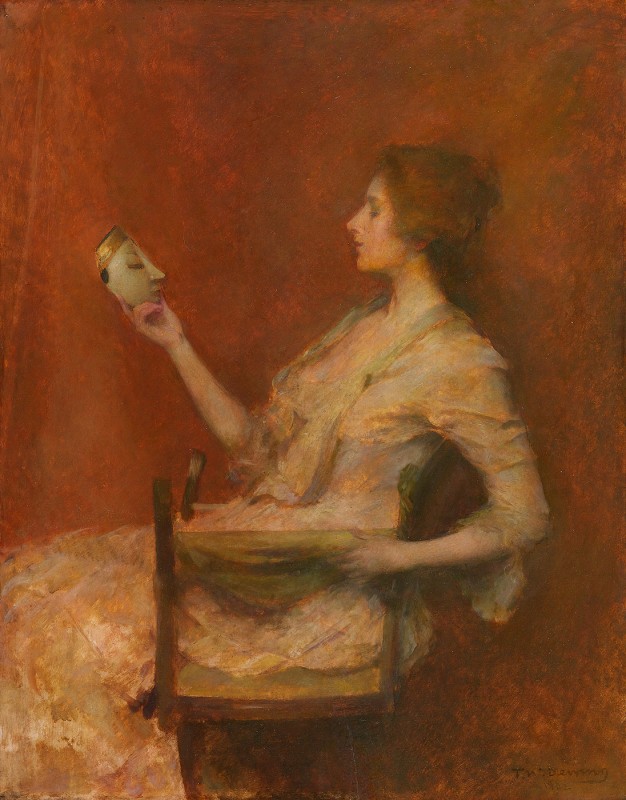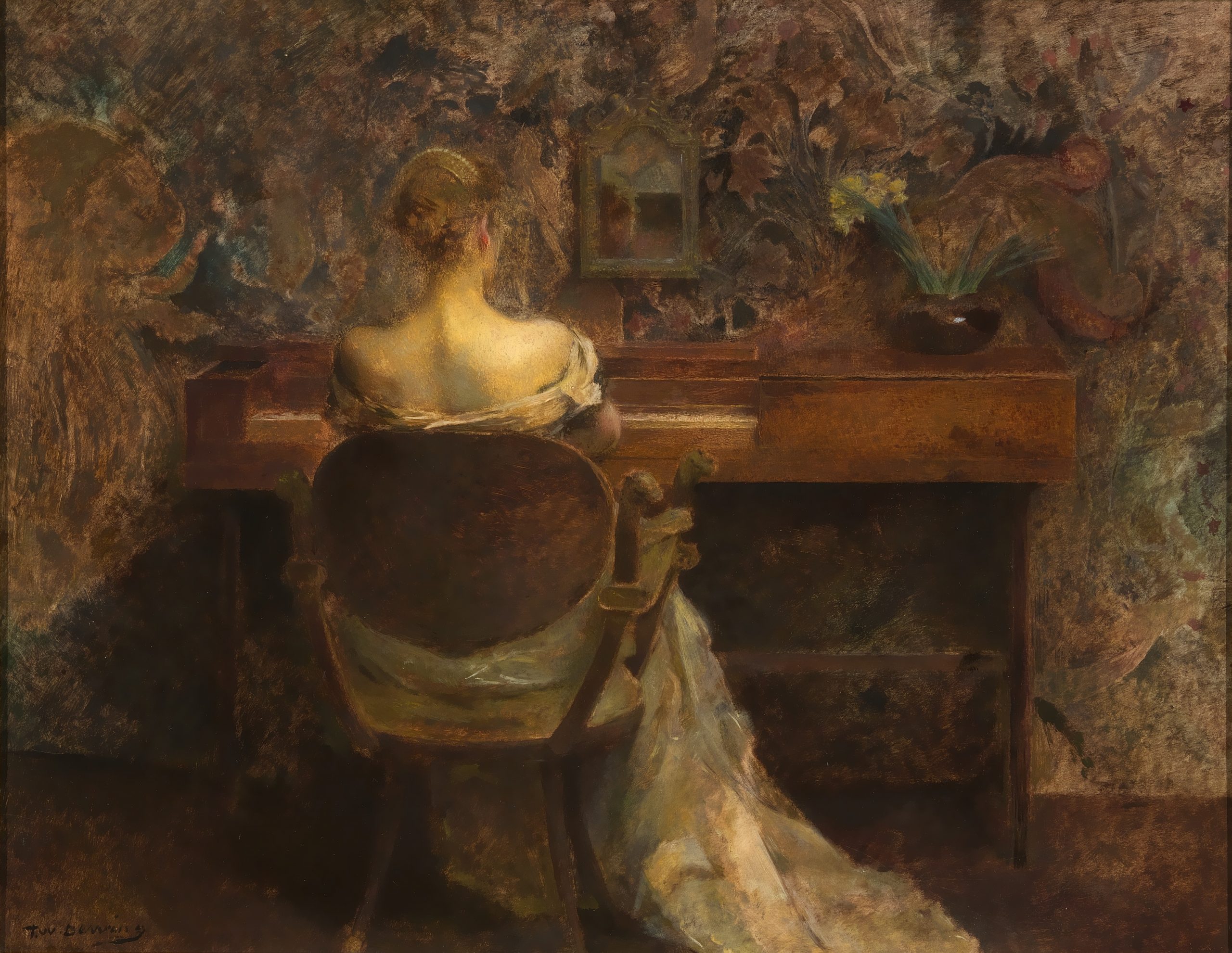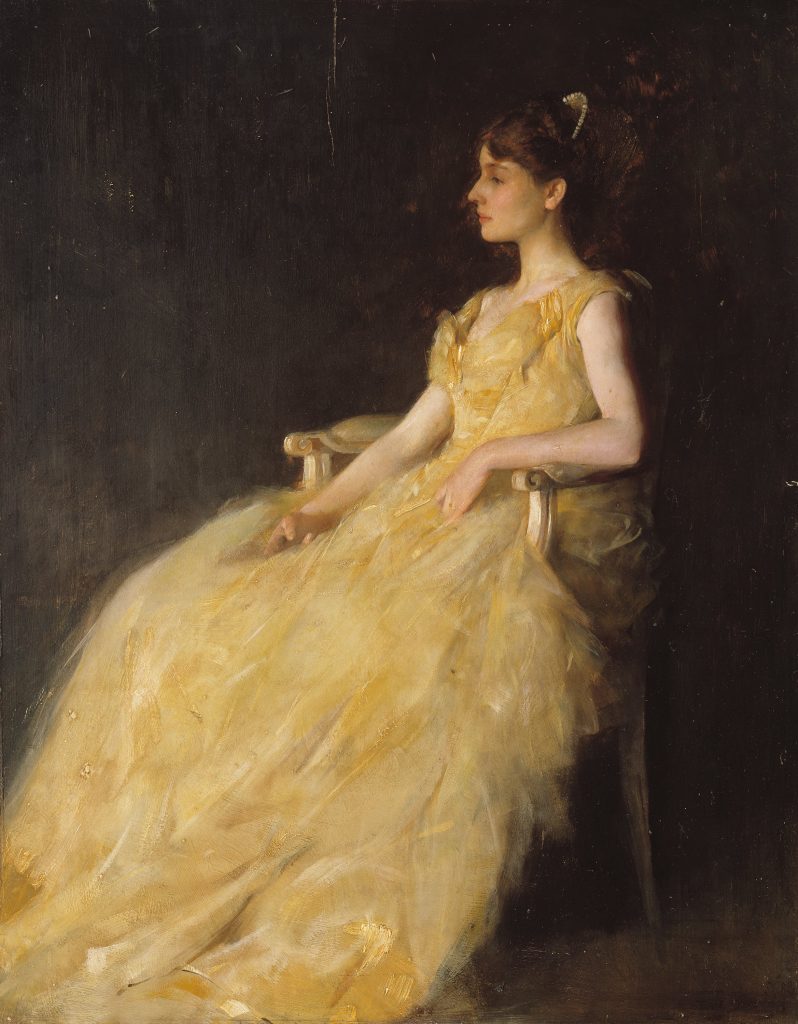
Thomas Wilmer Dewing (1851-1938) was an American painter associated with the American Tonalist movement and the American Impressionist movement. His art is characterized by its soft, atmospheric quality, often depicting elegant, contemplative women in domestic interiors or outdoor settings.

- Early Life: Thomas Wilmer Dewing was born on May 4, 1851, in Boston, Massachusetts. He grew up in a middle-class family and displayed an early talent for art. His father, a successful merchant, supported his artistic pursuits.
- Education: Dewing studied at the prestigious Académie Julian in Paris, where he was exposed to European art and the works of the French Impressionists. This experience had a significant influence on his artistic development.
- Marriage and Collaborative Work: In 1881, Dewing married Maria Oakey Dewing, a talented artist in her own right. The couple often collaborated on works of art and became central figures in the American art scene. Maria sometimes served as a model for Thomas’s paintings.
- Tonalism and Impressionism: Dewing’s early work was influenced by Tonalism, a style characterized by a subdued palette and a focus on creating mood and atmosphere through color and light. As his career progressed, he incorporated elements of Impressionism, using loose brushwork and capturing the effects of light and color in his outdoor scenes.
- Artistic Style: Dewing is best known for his depictions of women in dreamy, contemplative settings. His subjects are often portrayed in ethereal, idealized landscapes or elegant, minimalist interiors. He was a master at creating a sense of ambiguity and mystery in his paintings, allowing viewers to interpret the emotions and stories behind his subjects.
- Success and Recognition: Dewing achieved significant success during his lifetime. He exhibited his work at major art institutions, including the National Academy of Design and the Pennsylvania Academy of the Fine Arts. He also became a member of the Ten American Painters, a group of prominent American artists who exhibited together.

- Later Life: Dewing continued to paint and exhibit his work throughout his life. He and his wife lived in New York City and maintained a studio in Cornish, New Hampshire, where they were part of the Cornish Art Colony, a community of artists, writers, and musicians.
- Legacy: Thomas Wilmer Dewing’s contributions to American art are highly regarded. His distinctive style and focus on evoking mood and emotion through color and composition make him a significant figure in American Tonalism and Impressionism. His works are displayed in major art museums and collections throughout the United States.
Thomas Wilmer Dewing’s art continues to be admired for its beauty, elegance, and the sense of quiet introspection it conveys. His legacy endures as a testament to the creativity and innovation of American painters in the late 19th and early 20th centuries.






